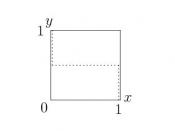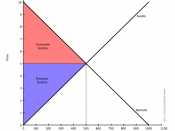Question 1
Output | ATC | AVC | FC AFC * Q | TC FC +VC | MC TC/Q | MR | TR |
1 | 44 | 14 | 30 | 44 | 44 | 40 | 40 |
2 | 28 | 13 | 30 | 56 | 28 | 40 | 80 |
3 | 30 | 20 | 30 | 60 | 20 | 40 | 120 |
4 | 34 | 26.5 | 30 | 136 | 34 | 40 | 160 |
5 | 40 | 34 | 30 | 200 | 40 | 40 | 200 |
b)
c)
Question 2 a)
Student | Reservation Price | No. of sessions | Total Revenue P*Q | Marginal Revenue |
A | 40 | 1 | 40 | 40 |
B | 38 | 2 | 76 | 36 |
C | 36 | 3 | 108 | 32 |
D | 34 | 4 | 136 | 28 |
E | 32 | 5 | 160 | 24 |
F | 30 | 6 | 180 | 20 |
G | 28 | 7 | 196 | 16 |
H | 26 | 8 | 208 | 12 |
Price discrimination occurs when essentially the same good or service is provided to different buyers (or different units of the same good to the same buyer) at different prices, the difference in price being unrelated to the cost of providing (production, transport etc.)
the good or service. The aim of Price discrimination is to maximise economic surplus by setting different prices for people with high or low reservation prices. There are three conditions that need to be satisfied for price discrimination to be successful:
market power (ability to set price)
ability to separate buyers with high reservation prices from those with low reservation prices
ability to prevent arbitrage (resale of the good by low price customers to high price customers)
Perfect price discrimination Occurs when a firm sells each unit of a good at
Buyers' reservation price. If a firm can charge each customer their maximum reservation price for each unit bought they can extract the entire consumer surplus as revenue. Also known as 'one-to-one' marketing or 'Personalised pricing'.
With perfect price discrimination, the firm's MR is the same as its demand curve. In this case increasing sales...


